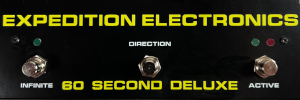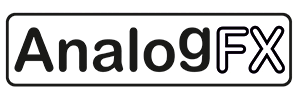AIRA — Artists make first contact with AIRA
Published on Feb 13, 2014 RolandChannel·835 videos
"Groundbreaking artists talk about their experiences with Roland instruments and make first contact with the AIRA gear. Artists appearing are: Arthur Baker, Ricardo Villalobos, A Guy Called Gerald, Rain Man, Netsky, Oscar Burnside, Boys Noize, Dr Meaker, Hardfloor, John Heckle, Hisashi Saito, and Akkord."
This post might take a bit to load. :)
Update3: You can find a write-up on Novamusik here.
Update2: You can find comments and discussion on this post on The MATRIXSYNTH Lounge here. I also added a page break for this post on the main site so it doesn't slow the site down for new posts. Click the "Click for more" link to get to the full post.
Showing posts sorted by relevance for query Circuit 3. Sort by date Show all posts
Showing posts sorted by relevance for query Circuit 3. Sort by date Show all posts
Friday, February 14, 2014
Wednesday, February 09, 2011
HV-330 Choir Filter Roland VP-330
HV-330 Choir Filter + JH Triple Chorus Demo (Roland VP-330)
Uploaded by gstormelectro on Jul 9, 2011
"Quick demo of two effects processors:
- JH Triple Chorus
- HV-330 custom built 7-band choir filter similar to Roland VP-330"
Note: the videos below are no longer on YouTube. The FlakeStick channel they were on no longer exists. The descriptions will remain below for the info, and for archival records - a note that they once existed.
Uploaded by gstormelectro on Jul 9, 2011
"Quick demo of two effects processors:
- JH Triple Chorus
- HV-330 custom built 7-band choir filter similar to Roland VP-330"
Note: the videos below are no longer on YouTube. The FlakeStick channel they were on no longer exists. The descriptions will remain below for the info, and for archival records - a note that they once existed.
Friday, January 14, 2022
ARP 2500 Styled MFOS Music From Outer Space Modular Synthesizer
Note: Auction links are affiliate links for which the site may be compensated.
via this auction
Tone Tweakers eBay | Reverb
Note auction links are affiliate links. See the site's privacy policy for more info.
"Here's an interesting one-of-a-kind synth. We bought this from a customer who was into DIY electronics. He always admired the design of the ARP 2500 but couldn't find one, so he built his own! Well, kind of. He bought MFOS Music From Outer Space circuit boards and assembled the circuits. He made his own front panels to look similar to those on the arp2500 and wired them up. They're installed in a nice wooden cabinet he made as well.
This system is a real pleasure to play. If it doesn't sell, we're going to use it in our studio as a secret weapon, as it sounds great and quite different from our other synths.
via this auction
Tone Tweakers eBay | Reverb
Note auction links are affiliate links. See the site's privacy policy for more info.
"Here's an interesting one-of-a-kind synth. We bought this from a customer who was into DIY electronics. He always admired the design of the ARP 2500 but couldn't find one, so he built his own! Well, kind of. He bought MFOS Music From Outer Space circuit boards and assembled the circuits. He made his own front panels to look similar to those on the arp2500 and wired them up. They're installed in a nice wooden cabinet he made as well.
This system is a real pleasure to play. If it doesn't sell, we're going to use it in our studio as a secret weapon, as it sounds great and quite different from our other synths.
Monday, August 04, 2008
Circuit Bent Glitch Drone Synth
 images via this auction
images via this auction"A- switch disables glitch circuit from audio output to use C as momentary action button.
B- switch changes 1,2,3,4 to four alternate sounds.
C- only works as an action button while A is off.
D- glitch button. once pressed while sounds from the glitch circuit are being played, the sounds will spin off in to a glitch frenzy.
E- glitch reset. resets the glitch circuit without any interference to the operation of the rest of the keyboard.
F- glitch oscillator. modulates the pitch of the glitch circuit.
G- keyboard oscillator. modulates the pitch of the keyboard.
H- keyboard envelope stretch
I- oscillator mix-up switch
1- keyboard osc. ramp shape switch
2- glitch circuit osc. ramp shape switch
3- glitch circuit sound button
4- glitch circuit sound button
5- glitch circuit sound button
6- glitch circuit sound button
the volume pot is pretty stingy when you play through the built in speaker, but it is perfect for amps and soundcards.
This keyboard is one of a kind. that means there will never be another one like it in all of space and time. i put a lot of time and quality work in to all of my circuit bent pieces."
CIRCUIT BENT KEYBOARD
YouTube via noystoise
Monday, September 04, 2023
Novation Circuit and Delorean Dream 3 Video #1
video upload by G Tracks
"Yves has done it again with his new Delorean Dream 3 pack. This is me GTracks using the Novation Circuit and the Delorean Dream 3 pack to create multiple sessions to bring you this Track. The work flow is a little different from the Circuit Tracks and I am not as perfect as I would like to be with the timing but the grittiness of the Circuit still shines through. Yves Big City Mastering has created this pack with huge sounds and patches that stand out from the rest. This is the beginning of a series of Tracks using this pack and the Novation Circuit and the Novation Circuit Tracks to bring you along for an unforgettable ride. I can't say enough about the pack and the samples! They are great and everyone should have this pack in there components software. I beta tested this pack before it came out and Yves was AWSOME throughout; the final pack is worth every penny to pick up @IsotonikStudios The creators put a lot of time into these packs to ensure that we have quality samples to work with when we are creating our own music. Please Like and Subscribe and stay tuned for more Great Tracks. Thanks for watching, best heard with headphones 🎧 Let's go make some music 🎵🎶🎵🎶
Pack used is Delorean Dream 3 available soon!!!!!!!!!!
Packs from @IsotonikStudios are amazing packs and very versatile. Big sounds that can be modified to suit your style and needs. Have Fun!!!!"
Monday, November 07, 2016
Novation Circuit Tracks by Precept
Published on Nov 6, 2016 Precept
1. Novation Circuit - 'Skylight'
"100% Circuit, no external effects or instruments used. This is using the new Novation components pack, available from the 'My Circuit' editor. All samples and presets are from that pack."
2. Novation Circuit - 'Progress'
"Another Novation Circuit demo showing how beautiful this piece of gear can sound. 100% Circuit, no external effects or instruments used. I have imported my own samples into the Circuit for the drum parts and used the sample flip feature to use more samples."
3. Novation Circuit - 'Distance'
"Novation Circuit track, no external effects or instruments. 100% Novation Circuit.
I've created my own synth patches using the free Circuit Editor, and imported my own samples for the drum parts using Circuit Components."
Saturday, June 17, 2017
Minimoog Service & Operation Manual
Note: Auction links are affiliate links for which the site may be compensated.
via this auction
"1) Schematics and Circuit Diagrams: Twenty 11"x17" schematic diagrams on ten double sided fold out sheets dated 1970 - 1973 with these titles:
* MINI D OSCILLATOR P.C. BRD. ASSY. SCHEMATIC (Date: 4-10-72, Moog Music Inc., Williamsburg, New York)
* MINI BOARD No.3 SCHEMATIC DIAGRAM ( Date: 7–5-73, Moog Music Inc., Williamsburg New York.) There are 4 circuit diag. on this page: “DUAL VOLTAGE REGULATOR”, “MODULATION AMP MIX”, “NOISE GENERATOR”, “HEADPHONE AMP”.
* MINI-MOOG BOARD 1 COMPONENT LOCATION (Date: 7-73, Moog Music Inc., Williamsburg, New York)
* MINI-MOOG BOARD 2 COMPONENT LOCATION (Date: 7-73, Moog Music Inc.,Williamsburg, New York)
* MINI-MOOG BOARD 3 COMPONENT LOCATION (Date: 7-73, Moog Music Inc., Williamsburg, New York)
* MINI-MOOG BOARD 4 COMPONENT LOCATION (Date: 7-73, Moog Music Inc., Williamsburg, New York)
* MINI BOARD No.2 CONTOUR GEN. & KEYBOARD CIRCUIT SCHEM. DIAG. (Date: 7-73 Moog Music Inc., Williamsburg, New York)
* MINI “D” FILTER BOARD ASSY. SCHEMATIC BOARD 4 (Date: 7-73, Moog Music Inc., Williamsburg, New York)
via this auction
"1) Schematics and Circuit Diagrams: Twenty 11"x17" schematic diagrams on ten double sided fold out sheets dated 1970 - 1973 with these titles:
* MINI D OSCILLATOR P.C. BRD. ASSY. SCHEMATIC (Date: 4-10-72, Moog Music Inc., Williamsburg, New York)
* MINI BOARD No.3 SCHEMATIC DIAGRAM ( Date: 7–5-73, Moog Music Inc., Williamsburg New York.) There are 4 circuit diag. on this page: “DUAL VOLTAGE REGULATOR”, “MODULATION AMP MIX”, “NOISE GENERATOR”, “HEADPHONE AMP”.
* MINI-MOOG BOARD 1 COMPONENT LOCATION (Date: 7-73, Moog Music Inc., Williamsburg, New York)
* MINI-MOOG BOARD 2 COMPONENT LOCATION (Date: 7-73, Moog Music Inc.,Williamsburg, New York)
* MINI-MOOG BOARD 3 COMPONENT LOCATION (Date: 7-73, Moog Music Inc., Williamsburg, New York)
* MINI-MOOG BOARD 4 COMPONENT LOCATION (Date: 7-73, Moog Music Inc., Williamsburg, New York)
* MINI BOARD No.2 CONTOUR GEN. & KEYBOARD CIRCUIT SCHEM. DIAG. (Date: 7-73 Moog Music Inc., Williamsburg, New York)
* MINI “D” FILTER BOARD ASSY. SCHEMATIC BOARD 4 (Date: 7-73, Moog Music Inc., Williamsburg, New York)
Sunday, December 20, 2020
The Minimoog Synthesizer Model D Service and Operating Manual
Note: Auction links are affiliate links for which the site may be compensated.
via this auction
"Three main sections:
1) 1) Schematics and Circuit Diagrams: Twenty 11"x17" schematic diagrams on ten double sided fold out sheets dated 1970 - 1973 with these titles:
* MINI D OSCILLATOR P.C. BRD. ASSY. SCHEMATIC (Date: 4-10-72, Moog Music Inc., Williamsville, New York)
* MINI BOARD No.3 SCHEMATIC DIAGRAM ( Date: 7–5-73, Moog Music Inc., Williamsville New York.) There are 4 circuit diag. on this page: “DUAL VOLTAGE REGULATOR”, “MODULATION AMP MIX”, “NOISE GENERATOR”, “HEADPHONE AMP”.
via this auction
"Three main sections:
1) 1) Schematics and Circuit Diagrams: Twenty 11"x17" schematic diagrams on ten double sided fold out sheets dated 1970 - 1973 with these titles:
* MINI D OSCILLATOR P.C. BRD. ASSY. SCHEMATIC (Date: 4-10-72, Moog Music Inc., Williamsville, New York)
* MINI BOARD No.3 SCHEMATIC DIAGRAM ( Date: 7–5-73, Moog Music Inc., Williamsville New York.) There are 4 circuit diag. on this page: “DUAL VOLTAGE REGULATOR”, “MODULATION AMP MIX”, “NOISE GENERATOR”, “HEADPHONE AMP”.
Tuesday, June 30, 2020
Korg Monologue, MicroFreak, Novation Circuit, Volca FM, NTS-1, Lone Rider part 3
Waveformer
All parts here.
"Third and final part of a three-part jam, featuring the Korg Monologue, Arturia MicroFreak, Novation Circuit, Volca FM, and with Zoom MS-70CDR and Korg NTS-1 on effects.
My music on Bandcamp: http://waveformer42.bandcamp.com/
See the two previous videos for part 1 and 2. The tree jams use the same instruments and effects, but with different themes.
The Monologue is used for 3 solo parts - one bright synth-y lead in the beginning, one grumpy distorted lead sound in the middle, and one theremin-like sound at the end. All based on the same custom patch, but with modified envelope, oscillator mix and filter to give each solo a unique character.
The MicroFreak is doing chords with a simple super saw patch and lots of chorus, delays and reverb from the MS70. In the section from 7:30 to 9:30, I'm using a nice "trick" to get from a C minor to a Eb minor in a smooth way. I go from Eb to G7, and then to B diminished 7 (just move the low G note a half step up to a G sharp), and then on to Bb7 (move the B one half step down to a Bb). The Bb7 is the dominant chord for an Eb minor, so the transition to Eb minor feels very natural. To my ear, all these transitions feel very smooth, and still we end up on a Eb minor chord three half steps from the C minor root. And the G minor note in the Eb minor chord is definitely not in the C minor scale. It's even a tritone. The diminished 7th chord of a scale is a very nice gateway to other scales. If you're in C (major or minor) scale, you can use the B diminished chord to go to Eb, to Gb and to A - minor or major. All of these are just a half step up from a note in the diminished chord, so the tension in the diminished chord resolves nicely to any of these.
Monday, March 01, 2021
Synth Demos by Lost Clouds
If ou are viewing this post from the front page you will see a more link directly below. Click it before you start to get to the list of videos plus descriptions for each. You can use the controls at the bottom of the player to skip around. You can find Lost Clouds music at https://lostcl0uds.bandcamp.com
Friday, October 02, 2020
Gershon Kingsley - Popcorn (cover, Syntaxis uModules demo)
Krzychu1995
"!!! available at syntaxis.com.pl !!!
Last time I showed some sounds from Syntaxis micromodules system. Now it's time for more musical demonstration. Very old and overused track, but it's great for presenting capabilities of our synth.
Every sound, except drums comes from synth in the same configuration as in the second demo from my channel."
"micromodular starter kit
This is a set of components for building a basic but complete analog synthesizer on a breadboard. Although it might not have professional look, you will be surprised with its professional sound.
The kit includes:
μPSU·112·A power supply unit
μVCO·3340·A micromodule
μVCF·3320·LP4·A micromodule
μVCA·3360·LIN·A micromodule
μADSR·3310·A micromodule
μLFO·3340·A micromodule
a breadboard, 3x3 units (3 x EIC-16020, 6 x EIC-16010), E.I.C, Taiwan
jumper wires 340 pcs, Wisher, Taiwan
20 potentiometers B10k(*), Alpha, Taiwan
rotary switch, 3 positions, Alpha, Taiwan (VCO wave selection)
rotary switch, 4 positions, Alpha, Taiwan (LFO wave selection)
3 breadboard connectable 3.5mm jack mono sockets
6 connection wires (power connection)
laptop charger, 20V, 3A with 2.5/5.5 plug
2.5/5.5 DC socket with spring contacts
connection diagram
Monday, January 02, 2012
Details on the Pittsburgh Modular Fragments Generator
video posted here
Full details via Pittsburgh Modular
"The 'Fragments' are a set of pings, or short bursts of sound created by a trio of Twin-T filters. The Twin-T filter circuit was used by some classic analog drum machines to create percussion sounds. Realistic tom-toms, congas, and kick drums can all be made using this method. The Twin-T filters included in the Fragments Generator have been adapted and optimized for a specific purpose. The idea was to create an analogue method of generating sounds at the level of individual "grains" or "fragments" similar to a traditional digital Granular synthesizer. By approaching the process from another angle we have come up with an entirely new sub-genre of synthesis.
The sound produced by the basic Twin-T filter is quite close to the idealized grain, a decaying sine-like waveform that can easily be varied in amplitude, frequency, and position. Typically, the Twin-T filter produces a single sound up to a few times a second. What would happen if that occured a thousand or more times per second? The Fragments Generator creates a constant tone that consists of overlapping and interacting fragments which can be manipulated in a number of ways.
Amplitude
The amplitude of each fragment is set at its initiation. This is important as just creating a variable mix of "full strength" tones would not relize a wide enough scope of fragment-to-fragment variability.
Wednesday, December 07, 2016
'S Gone - CALC- Novation Circuit controlling 0-Coast, ARP 2600, Leploop and a ton of other stuff.
Published on Dec 7, 2016 -CALC-
"This is a bit of a monster set-up. Circuit is controlling everything and it's a huge chain of events.
The track found its way into two parts with a huge pallette of synths at the beginning and a Leploop psyche odyssey jam at the end. not without it's errors but it was a jam.
Gearwise:
Circuit's MIDI output is feeding a Hotchki55 Banana split 6 way MIDI thru.
That in turn is feeding MIDI to a Roland Juno106, Korg Poly61M, Make Noise 0-coast, Leploop… oh the lovely Leploop and (using the fantastic Hotchki55 CVOCD MIDI to CV converter) the Multi Cassa V2 is being triggered by Circuit’s Drum 3+4
A nice thing is using the 0-Coasts MIDI B CV and Gate output to control the ARP2600 from Circuit’s Synth (MIDI) 2 sequence. Having the ARP sequenced from Circuit is a massive joy!
Circuit’s synth 2 track is actually sequencing the Juno, Korg, ARP and its own Circuit sound towards the end.
Synth 1 is controlling the Leploop and 0-Coast sound arpeggiating notes from MIDI 1 but with a trigger from the CVOCD for a bit of rhythmic interest.
All the stuff is running through the strymon Big Skies and TimeLine and the Circuit takes a slightly dizzy spell through the amazing Rodec Restyler.
The Strymons really PSYCHE this out towards the end of the track.
Of course the is a heavy helping of Leploops Cassa and noisey hats throughout and the incredible new Multicassa V2 is just sublime. Especially triggering it from a sequencer… there is a lot more to come with this little wooden box.
So there is the set up… as I said it’s monster but everything used is totally being controlled by the two MIDI channels of Circuit, with some percussion and triggering added by Circuits sample drum tracks. The Leploop, 0-Coast and MultiCassa take their midiclock from Circuit too.
Just goes to show what you can do with two midi channels and 4 drum tracks and a midiclock output."
Sunday, May 18, 2008
make noise moddemod
 Currently available at Analogue Haven.
Currently available at Analogue Haven.this circuit was originally utilized in the generation of single side band modulation; a military developed radio communications technology. a program (speech, data) would be mixed with a high frequency carrier waveform using this circuit. after filtering an rf amplifier would be used to broadcast the transmission. at this point the signal could be said to be modulated, sounding unintelligible. at the receiving end, this circuit could again be used to demodulate the radio transmission by re-introducing a carrier waveform of the same shape and frequency used to create the transmission. as you can imagine, some cool distortions happen on account of the inadequacies of this technology, variation in the two carrier waveform generators (both frequency and shape), signal levels and of course, interference. reclaimed for artistic purposes by harold bode (and perhaps others) reclaimed this technology for artistic purposes in the early 1960's (utilizing carrier waveforms in the audio range instead), and bob moog (in collaboration with bode) incorporated it into his modular synthesizer systems in the 70's. by then the design was pretty different and they were calling it a "ring modulator" possibly for the "diode ring" configuration originally utilized or perhaps they knew it was a more appealing name that, to some degree, described the clangorous, bell like sounds a single iteration of the circuit was capable of creating.
the moddemod features 2 identical circuits that may be used together or individually. when using them together there is no need patch the output of circuit 1 to the input of circuit 2 as they are internally patched when nothing is inserted at the output of circuit 1 and the input of circuit 2. i worked very hard to minimize carrier bleed. the amount varies from unit to unit and even circuit to circuit within each unit. however, all units match or better the level of bleed you hear in most ic based ring modulators. for this type of circuit, that is very good!
to use this module you will need a minimum of 2 signal sources. 1 will be the program. this signal is inserted at the program input (sockets 1 or 4). the 2nd is the carrier, and it should be inserted at the carrier input (sockets 2 or 5). the outputs are at sockets 3 and 6. by varying the frequency, shape and level of these signals, many different timbres may be heard.
this module is a 4hp wide euro-rack module that consumes no current.
a fun movie about the moddemod."
YouTube via MAKEN0ISE
audio:
the sound is way out, just listen!
something percussive
something else percussive
Thursday, May 03, 2018
New Bastl Instruments TIMBER Introduction - Dual Waveform Lumberjack
Published on May 2, 2018 Bastl Instruments
"This is a walkthrough of Timbers features with short sound examples and waveform visualisation.
All parameters are explained briefly to give an insight to how Timber can be used to add harmonics
to simple waveforms or any signal."
via Bastl Instruments
dual waveform lumberjack
Timber is very flexible wave shaping module that can produce rich timbres by adding harmonics to simple waveforms (triangles and sinewaves) or any other signal. It has 2 different unique wave shaping circuits – I. – the WAVE DRIVER and II. -the WAVE FOLDER and voltage controlled crossfader to fade between the different circuits or between one of them and the clean input signal.
Both circuits share the same control voltages: the SHAPE which sets the input amplification before the wave shaping circuit and the SYMMETRY control which adds voltage offset to the input signal to provide various asymmetric overdrives or wave folding sounds. There is also voltage FBK CV jack which when provided with positive voltages feeds respective portion of the output signal back to the input which results in chaotic and aggressive behaviours. It is calibrated to work well with 5V gate voltages.
I. the WAVE DRIVER is an overdrive circuit with one folding stage and it has 2 configuration 3-way switches (9 different configurations). The drive switch can set the overdrive character to SOFT or HARD or something in between. The FOLD switch can set the folding threshold to HI or LO or it can turn the folding stage off in the NO position.
II. the WAVE FOLDER is a novel take on the serge style wavefolding circuit which has specific behaviour to abuse the high gain of the input amplification stage to provide rich high frequency timbres with higher settings of the SHAPE parameter. It has a configuration switch which can either activate clean 4 stage wavefolding in the OK position or highly asymmetric folding stage in the KO position that provides strange metallic character. The NO position provides only the very last overdrive-folding stage.
FEATURES:
I. WAVE DRIVER is overdrive circuit with one folding stage.
3-way DRIVE SWITCH to set character of overdrive (SOFT-MID-HARD)
3-way FOLD SWITCH to configure the folding threshold level (LO-NO-HI)
independent output I. OUT
II. WAVE FOLDER is 4 stage wavefolding circuit
3-way FOLD SWITCH to set character of folding stages (OK-NO-KO)
independent output II. OUTcommon INPUT for both circuits
SHAPE sets input amplification before signal enters waveshaping stages
SYMMETRY adds voltage offset to the input signal
SYMMETRY becomes bipolar attenuator when the jack is connected
X-FADE voltage controlled crossfader with bipolar attenuator
switch to select between INPUT and I. WAVE DRIVER for the left side of the X-FADE
X-FADE IN jack breaks normalisation of II. WAVE FOLDER on the right side of X-FADE
positive voltage at FBK CV jack sends signal from the output or II. back to the INPUT
TECHNICAL DETAILS:
7 HP
PTC fuse and diode protected 10 pin power connector
24mm deep
power consumption +12: < 50mA, -12: <50 mA
Tuesday, April 23, 2019
Empress FX Zoia Tutorials by Ron Cavagnaro
Published on Apr 23, 2019 Ron Cavagnaro
Playlist:
1. Quickstart - FX Basics // Empress Effects Zoia Tutorial
This video is intended to show the most basic functioning to start off. It is intended for the absolute beginner. There will be more videos that will progress to more deeper functions so please stay tuned!2. Quickstart Pt 2 - LFO Basics // Empress FX Zoia Tutorial
Intro 0:00
Audio Input 0:55
Audio Output 1:53
Making Connections 2:20
Disconnecting Modules 2:53
Adding FX 3:24
Connecting FX 3:55
Changing Module Parameters 4:28
Erasing Module 4:59
Adding Different FX 5:11
Chaining FX Modules 5:57
Saving/Renaming Presets 7:02
A Few Factory Presets Demo 7:57
This tutorial is how to apply LFO's to the effects modules on the Empress FX Zoia. If this video seems confusing please watch the previous video to learn the more basic settings.
Intro 0:00
Creating Your Own Tremolo w/ Overdrive 0:44
Copying A Module 1:05
Editing A Module 1:27
Adding VCA 1:38
Connecting modules 2:01
Assigning LFO to VCA 2:36
Changing LFO Waveform 3:37
Clearing Modules 4:03
Adding Lowpass Filter 4:14
Adding another LFO 5:44
Deleting Filter Modules 6:37
Adding Aliaser Module 6:46
Connecting LFO to Aliaser 7:22
Adding Bitcrush Module 7:49
Adding Pitchshifter Module 8:28
Adding a few more LFOs 11:13
Short Novation Circuit Demo with Zoia FX 12:13
Friday, November 27, 2009
circuit bent yamaha tg33 vector synth
tg33 revision
YouTube via spunkytoofers
 via this auction
via this auction
"- circuit bent yamaha tg33 synth with vector joystick (retains full functionality pre-bent when all bends are deactivated)
-breakout box with 32 banana jack patchbay which effects the awm waveforms
-4 switches activates 8 dedicated banana jacks located on side and back of box for switching
-8 stackable banana cords provided
-getlofi ltc1799 precision oscillator replaces internal clock frequencies for smooth pitch control of approximately 5+ octaves on any given note. (until the sound breaks into sound grains)
-1 switch selects precision oscillator or original fixed frequency clock
-1 fm/awm waveform glitch and resynthesis 4 position rotary switch with one center off-momentary on/lock on switch to activate rotary.
-replaced internal memory battery with a fresh battery.
-db25 connector cable from breakout box to synth
-db25 jacks on tg33 and breakoutbox
-1 vintage blue beehive lens with bright led lighting
-1 vintage milk glass lens with random slow phase lighting
-original owners manual
-bend diagram jpeg and tips and tricks sheet emailed to winner
-cd-r of manual, many great patches, and editor program
-power supply included (north american supply only, international countries will need to supply their own adapters. the tg33 is regulated to handle anything from 9-12 volts dc with a positive tip around 700 ma is best)
(check out video below)
this is probally my secret weapon of choice at the current moment. it's quite unique from other synthesizers and will reward those that take the time to program/tweak this thing.
although this isn't the most difficult synthesizer to program it will require the user to dig in a little bit and study the manual. the editor also accesses some very in depth synthesis options. vector synthesis is pretty straightforward and intuitive to work with but there are elements like assigning midi controls, selecting voices to work together, envelope shaping, indepndant lfos, sending sequences/controllers, and recording vector movements to really make the best of the possibilities. it's pretty simple to work with but has real power shaping sculpture.
if designing from scratch is too much for you to deal with it still would be easy tweak or play many of the included patch banks straight and all patches will respond to circuit bending.. the synth also features a random vector voice create feature!!! the included backed up sound banks are really well designed and have alot of sounds to keep you busy. but. those without a decent midi controller, basic midi knowledge, basic synth design, tweaks, and assigning controls from menus, etc, this may not be a good synth to start with if you are starting out or don't work with midi, otherwise be prepared to meet a truly unique synth!! "nice to meet you" it says..
the synth works with 4 waveforms in the vector per note of polyphony (think 4 oscillators per note). 2 of which are fm, 2 are awm based sampled waveforms. the awm waveforms are bendable. so approximately half of the 300+ available waveforms are circuit bendable. each waveform is independantly circuit bendable with it's own response to the pressures of bending. what makes that interesting is that when you play with the vector you can assign the circuit bent waveforms to the vector and also assign waveforms that aren't circuit bendable to the vector to either stack voices or morph a voice from the strange abstract sounds and aleatoric responses of circuit bent synthesis into a more traditional synthesis by use of the vector joystick or by assigning the x-y grid to two midi controllers. you can also record exact movements in the vector into the voice's program everytime you trigger a note. either way the awm waveforms can be circuit bent or left alone. the circuit bends depending on how you patch the waveform can have subtle tonal results such as stutter, tonal variations to extremes of complete self composing glitches or dense walls of sound. there are too many results to try to describe here.
instrument has an added getlofi precision oscillator which controls the total pitch of the synthesizer. all midi functionality is retained in the tuned frequencies of the oscillator. the oscillator is on a switch with the original clock signal if the user should not want to use overall pitch control. pitch bend internally by midi and pitch bending on the precision oscillator are not unlike each other but they are certainly completely different then each other.
the instrument is completely stable. able to go to completely strange circuit bent sounds and back to normal without any hitches at all in the system or voices!!!
now here is where things get completely chaotic!!!!
4 fm/awm brain scramble bends are allocated on a rotary switch. the rotary switch is activated by a switch is a 3 way switch which can either disconnect the rotary,momentary snap connect or lock into position. each bend interacts with the others to push it different directions sonically. these bends are completely chance orientated but more often then not great new patches are made and mysterious soundscapes occur. a switch activation cycles through complete mutations to the fm sounds, sound patch restructing, auto accompainments, self compositions, bizzare playing responses in reaction to sent control data. each throw of the switch creates a new sound either slightly altered to extremely altered with often mysterious and good results. since these bends are chaotic i've kept them seperate from the awm extention box as the awm bends of this instrument is completely stable and will not alter the sound of the patch when bends are deactivated. the fm bends are chance orienated and often alterations are extreme which make it better for studio work. although with some careful fm waveform assignments to the vector. you can find fm waveforms which aren't quite as extreme and make more subtle alterations and bent sounds. you can then improvise with the circuit bent fm/awm waveforms with some planning in regards to creating your own unique patches or finding the best presets and saving them into internal memory.
when fm waveforms are bent they can still be bent further with another activation from the fm switches but will not return the original patch without a power cycle on/off on the instrument. when the instrument is booted up the patch returns to its original form and nothing is lost in memory.
db 25 connector is in what used to be the cartridge slot with industrial strength adhesive. the connector already fit in the slot pretty nicely but the industrial strength adhesive sets the connector in it permanetely and securely. since the cartridge slot is occupied that closes up the option for using memory cards. this shouldn't be much a problem since the cartridge is proprietary and finding the exact card is extremely difficult since they are extremely rare and if you do find one they're pretty expensive not to mention all the time you'll be spending on ebay trolling for one.
the unit however has internal memory for patch storage as well as the ability to dump and recive patches via sysex. the unit's memory back up battery was replaced with a fresh lithium battery and a battery clip easily located so it would be easy to replace the battery in the future by the user or any tech.. as is, the fresh battery should last from 5-10 plus years depending on the use of this machine. the battery should last much longer than that, the battery i replaced was the original and was working fine before replacing and that battery had lasted nearly 20 years!! also a pdf manual, patch editor and many banks of great professional patches are included on a cd-r with this auction. i can include some patch notes of my own to illustrate how to organize a patch notebook to facilitate bending patches based on this system."
circuit bent yamaha tg33 vector synth and akai ewi 4000s
previously posted
circuit bent yamaha tg33 vector synth
Sold For: US $333.33
YouTube via spunkytoofers
 via this auction
via this auction"- circuit bent yamaha tg33 synth with vector joystick (retains full functionality pre-bent when all bends are deactivated)
-breakout box with 32 banana jack patchbay which effects the awm waveforms
-4 switches activates 8 dedicated banana jacks located on side and back of box for switching
-8 stackable banana cords provided
-getlofi ltc1799 precision oscillator replaces internal clock frequencies for smooth pitch control of approximately 5+ octaves on any given note. (until the sound breaks into sound grains)
-1 switch selects precision oscillator or original fixed frequency clock
-1 fm/awm waveform glitch and resynthesis 4 position rotary switch with one center off-momentary on/lock on switch to activate rotary.
-replaced internal memory battery with a fresh battery.
-db25 connector cable from breakout box to synth
-db25 jacks on tg33 and breakoutbox
-1 vintage blue beehive lens with bright led lighting
-1 vintage milk glass lens with random slow phase lighting
-original owners manual
-bend diagram jpeg and tips and tricks sheet emailed to winner
-cd-r of manual, many great patches, and editor program
-power supply included (north american supply only, international countries will need to supply their own adapters. the tg33 is regulated to handle anything from 9-12 volts dc with a positive tip around 700 ma is best)
(check out video below)
this is probally my secret weapon of choice at the current moment. it's quite unique from other synthesizers and will reward those that take the time to program/tweak this thing.
although this isn't the most difficult synthesizer to program it will require the user to dig in a little bit and study the manual. the editor also accesses some very in depth synthesis options. vector synthesis is pretty straightforward and intuitive to work with but there are elements like assigning midi controls, selecting voices to work together, envelope shaping, indepndant lfos, sending sequences/controllers, and recording vector movements to really make the best of the possibilities. it's pretty simple to work with but has real power shaping sculpture.
if designing from scratch is too much for you to deal with it still would be easy tweak or play many of the included patch banks straight and all patches will respond to circuit bending.. the synth also features a random vector voice create feature!!! the included backed up sound banks are really well designed and have alot of sounds to keep you busy. but. those without a decent midi controller, basic midi knowledge, basic synth design, tweaks, and assigning controls from menus, etc, this may not be a good synth to start with if you are starting out or don't work with midi, otherwise be prepared to meet a truly unique synth!! "nice to meet you" it says..
the synth works with 4 waveforms in the vector per note of polyphony (think 4 oscillators per note). 2 of which are fm, 2 are awm based sampled waveforms. the awm waveforms are bendable. so approximately half of the 300+ available waveforms are circuit bendable. each waveform is independantly circuit bendable with it's own response to the pressures of bending. what makes that interesting is that when you play with the vector you can assign the circuit bent waveforms to the vector and also assign waveforms that aren't circuit bendable to the vector to either stack voices or morph a voice from the strange abstract sounds and aleatoric responses of circuit bent synthesis into a more traditional synthesis by use of the vector joystick or by assigning the x-y grid to two midi controllers. you can also record exact movements in the vector into the voice's program everytime you trigger a note. either way the awm waveforms can be circuit bent or left alone. the circuit bends depending on how you patch the waveform can have subtle tonal results such as stutter, tonal variations to extremes of complete self composing glitches or dense walls of sound. there are too many results to try to describe here.
instrument has an added getlofi precision oscillator which controls the total pitch of the synthesizer. all midi functionality is retained in the tuned frequencies of the oscillator. the oscillator is on a switch with the original clock signal if the user should not want to use overall pitch control. pitch bend internally by midi and pitch bending on the precision oscillator are not unlike each other but they are certainly completely different then each other.
the instrument is completely stable. able to go to completely strange circuit bent sounds and back to normal without any hitches at all in the system or voices!!!
now here is where things get completely chaotic!!!!
4 fm/awm brain scramble bends are allocated on a rotary switch. the rotary switch is activated by a switch is a 3 way switch which can either disconnect the rotary,momentary snap connect or lock into position. each bend interacts with the others to push it different directions sonically. these bends are completely chance orientated but more often then not great new patches are made and mysterious soundscapes occur. a switch activation cycles through complete mutations to the fm sounds, sound patch restructing, auto accompainments, self compositions, bizzare playing responses in reaction to sent control data. each throw of the switch creates a new sound either slightly altered to extremely altered with often mysterious and good results. since these bends are chaotic i've kept them seperate from the awm extention box as the awm bends of this instrument is completely stable and will not alter the sound of the patch when bends are deactivated. the fm bends are chance orienated and often alterations are extreme which make it better for studio work. although with some careful fm waveform assignments to the vector. you can find fm waveforms which aren't quite as extreme and make more subtle alterations and bent sounds. you can then improvise with the circuit bent fm/awm waveforms with some planning in regards to creating your own unique patches or finding the best presets and saving them into internal memory.
when fm waveforms are bent they can still be bent further with another activation from the fm switches but will not return the original patch without a power cycle on/off on the instrument. when the instrument is booted up the patch returns to its original form and nothing is lost in memory.
db 25 connector is in what used to be the cartridge slot with industrial strength adhesive. the connector already fit in the slot pretty nicely but the industrial strength adhesive sets the connector in it permanetely and securely. since the cartridge slot is occupied that closes up the option for using memory cards. this shouldn't be much a problem since the cartridge is proprietary and finding the exact card is extremely difficult since they are extremely rare and if you do find one they're pretty expensive not to mention all the time you'll be spending on ebay trolling for one.
the unit however has internal memory for patch storage as well as the ability to dump and recive patches via sysex. the unit's memory back up battery was replaced with a fresh lithium battery and a battery clip easily located so it would be easy to replace the battery in the future by the user or any tech.. as is, the fresh battery should last from 5-10 plus years depending on the use of this machine. the battery should last much longer than that, the battery i replaced was the original and was working fine before replacing and that battery had lasted nearly 20 years!! also a pdf manual, patch editor and many banks of great professional patches are included on a cd-r with this auction. i can include some patch notes of my own to illustrate how to organize a patch notebook to facilitate bending patches based on this system."
circuit bent yamaha tg33 vector synth and akai ewi 4000s
previously posted
circuit bent yamaha tg33 vector synth
Sold For: US $333.33
Saturday, December 03, 2022
Stringer 3.1 update - native M1 support, divide-down engine | Solina VST
video upload by SonicProjects
"https://www.sonicprojects.ch/stringer...
SonicProjects Stringer version 3.1 update release trailer. Stringer is a hybrid vintage String Machine and Solina, ARP Omni and Logan String Melody emulator VST and AU plugin.
Stringer 3.1 offers extended compatibility and new features:
- Mac: Native M1 support and added VST3 (now AU and VST3)
- 5 added authentic monophonic envelopes (now 8 envelope types)
- Added monophonic bass section
- 3 new ensemble effect types based on the Solina circuit
- A switchable fully polyphonic phase-locked divide-down engine
- 30 new pressets (now total 128) showcasing the new features
The new features enhance the originally (until version 2.0) only purely sample-based engine with even more features for emulating vintage String machines from ground up without samples, which already started in version 3.0 with the added "Pure" sawtooth mode.
Thursday, January 09, 2014
Metasonix TM-3 SN80 Tube VCO SN TM3-80
Note: Auction links are affiliate links for which the site may be compensated.
via this auction
"This VCO has a very unique sound and tracks nearly 2 octaves with a HZ/volt CV source, But be warned, it is not perfectly scaled and is not temperature stable. That's not a defect its just the way it is, If you want pussy trance anthem pads or want to play Mozart then don't buy this. It's definitely a raw meat kind of aural experience, chewy and tough.
The METASONIX TM-3 consists of two thyratron tube sawtooth oscillators, which are wired in parallel but may be offset with their individual front-panel tuning controls. Furthermore, soft sync is available, to force oscillator 2 to track with oscillator 1.
The waveform produced by the 2D21/5727 thyratrons is unique and distinctive--a very imperfect sawtooth. It's the kind of sound that screams "VINTAGE", because the only other instruments that produce it are vintage ones--the Mixtur-Trautonium, the Univox, and some 1950s electronic organs.
Furthermore, there is a suboctave circuit, which adds a square wave one octave below oscillator 2. It includes short pulses an octave above, for a distinctive sound. And you can mess with the STABILITY control to get unique effects--because the suboctave divider is made of two neon lamps, and NOT a transistor flip-flop. Except for the CV driver, the TM-3 is all tubes.
And unlike most other synthesizer VCOs, the TM-3 is so sensitive that it is easily used for FM sound effects--simply by driving either CV input with a line-level audio signal. Both inputs are DC coupled and highly sensitive. The result is a unique, and very extreme, form of signal distortion.
The TM-3 is a Hz/V VCO, meaning it follows a linear characteristic. Each successive octave requires doubling the control voltage. As shipped, the first octave is swept from 0 volts to 0.25 volts, the next from 0.25 to 0.75 volts, etc. Although not standard to the present modular-synth industry, this scheme simplifies the TM-3's use as a signal processor, and avoids the use of an exponential converter circuit, which can drift with temperature or cause other problems. TM-3's CV control is compatible with vintage Korg MS series and Yamaha CS series synthesizers.
Technical specifications
Output signal max approx 10 v p-p. Capable of approximately 66 Hz to 526 Hz. Center pitch setting with tuning knobs and 0.0v input gives approx. low C (66 Hz). Actual range obtained depends upon individual thyratron tubes installed--about 2 1/2 octaves is typical. May be controlled from any MIDI-CV converter having Hz/V capability, including the Synhouse MIDIJACK II, Philip Rees Little MCV, Kenton Pro-Solo and Pro-2000, and Encore Expressionist.
Power input 10v AC to 12v AC, 50/60 Hz, 1 amp max at idle--derived from an appropriate plug-in AC adapter. Inputs: two 1/4" phone jacks for CV or audio (they mix linearly). Output: 1/4" phone jack, audio, mono, 50k ohm impedance.
Dimensions: 7 1/2" (192mm) x 4 3/8" (112mm) x 3" (77mm). Weight not including accessories approx. 5 pounds (2.2 kg).
This is used electronic gear in great shape (low hours) from a smoke free home studio. I test it before it ships, but it is non returnable and there is no guarantee other than it will not arrive DOA. Rock On!!"
via this auction
"This VCO has a very unique sound and tracks nearly 2 octaves with a HZ/volt CV source, But be warned, it is not perfectly scaled and is not temperature stable. That's not a defect its just the way it is, If you want pussy trance anthem pads or want to play Mozart then don't buy this. It's definitely a raw meat kind of aural experience, chewy and tough.
The METASONIX TM-3 consists of two thyratron tube sawtooth oscillators, which are wired in parallel but may be offset with their individual front-panel tuning controls. Furthermore, soft sync is available, to force oscillator 2 to track with oscillator 1.
The waveform produced by the 2D21/5727 thyratrons is unique and distinctive--a very imperfect sawtooth. It's the kind of sound that screams "VINTAGE", because the only other instruments that produce it are vintage ones--the Mixtur-Trautonium, the Univox, and some 1950s electronic organs.
Furthermore, there is a suboctave circuit, which adds a square wave one octave below oscillator 2. It includes short pulses an octave above, for a distinctive sound. And you can mess with the STABILITY control to get unique effects--because the suboctave divider is made of two neon lamps, and NOT a transistor flip-flop. Except for the CV driver, the TM-3 is all tubes.
And unlike most other synthesizer VCOs, the TM-3 is so sensitive that it is easily used for FM sound effects--simply by driving either CV input with a line-level audio signal. Both inputs are DC coupled and highly sensitive. The result is a unique, and very extreme, form of signal distortion.
The TM-3 is a Hz/V VCO, meaning it follows a linear characteristic. Each successive octave requires doubling the control voltage. As shipped, the first octave is swept from 0 volts to 0.25 volts, the next from 0.25 to 0.75 volts, etc. Although not standard to the present modular-synth industry, this scheme simplifies the TM-3's use as a signal processor, and avoids the use of an exponential converter circuit, which can drift with temperature or cause other problems. TM-3's CV control is compatible with vintage Korg MS series and Yamaha CS series synthesizers.
Technical specifications
Output signal max approx 10 v p-p. Capable of approximately 66 Hz to 526 Hz. Center pitch setting with tuning knobs and 0.0v input gives approx. low C (66 Hz). Actual range obtained depends upon individual thyratron tubes installed--about 2 1/2 octaves is typical. May be controlled from any MIDI-CV converter having Hz/V capability, including the Synhouse MIDIJACK II, Philip Rees Little MCV, Kenton Pro-Solo and Pro-2000, and Encore Expressionist.
Power input 10v AC to 12v AC, 50/60 Hz, 1 amp max at idle--derived from an appropriate plug-in AC adapter. Inputs: two 1/4" phone jacks for CV or audio (they mix linearly). Output: 1/4" phone jack, audio, mono, 50k ohm impedance.
Dimensions: 7 1/2" (192mm) x 4 3/8" (112mm) x 3" (77mm). Weight not including accessories approx. 5 pounds (2.2 kg).
This is used electronic gear in great shape (low hours) from a smoke free home studio. I test it before it ships, but it is non returnable and there is no guarantee other than it will not arrive DOA. Rock On!!"
Monday, April 29, 2013
Circuit Abbey Impulse Drive Waveshaper Eurorack Module
Note: Auction links are affiliate links for which the site may be compensated.

via this auction
Perfect Circuit Audio (RSS)
"Harmonics galore! A wave multiplying signal processing module which produces thick CV-able harmonic fields.
The Impulse Drive crossfades any two input sources and drives three comparator engines that are then cross-modulated to create unheard of sonic palettes. Crossfading, along with each of the comparator engines are under full CV control for precise timbre navigation. Feed combinations of waves, control signals, or experimental sources such as drum machines into the Impulse Drive to generate swirling streams of alien landscapes!
You can crossfade between the two signal inputs manually or with a control voltage; the result will be then processed by three comparator units called GRID, each producing a pulse wave. The Bias parameter determines the switching threshold of the comparator and it can be set manually or with a voltage. Each GRID section modulates the next one thru a digital ring modulator and adds even more harmonics. The signals can be tapped at the various outputs.
The Impulse Drive has 3 sections of harmonic generation with CV control. Each section feeds into the next using Digital Ring Mod technology and produces increasingly complex harmonic fields.
The Impulse Drive can be run at LFO rates to produce gates at the outputs - allows for generating CV-able sequences.
Conceived and refined over a decade in the Circuit Abbey lab, the Impulse Drive will provide unique flavor to any studio.
Features
2 signal inputs (Injector)
1 Injector-Select CV input
3 CV inputs for the waveshaper units (Grid 1-3)
3 Outs
3 Exhaust Port Outs
MON output
Injector Select knob
Injector Level knob
Level and Bias knobs for each 3 grids
LED Indicators for each Out"

via this auction
Perfect Circuit Audio (RSS)
"Harmonics galore! A wave multiplying signal processing module which produces thick CV-able harmonic fields.
The Impulse Drive crossfades any two input sources and drives three comparator engines that are then cross-modulated to create unheard of sonic palettes. Crossfading, along with each of the comparator engines are under full CV control for precise timbre navigation. Feed combinations of waves, control signals, or experimental sources such as drum machines into the Impulse Drive to generate swirling streams of alien landscapes!
You can crossfade between the two signal inputs manually or with a control voltage; the result will be then processed by three comparator units called GRID, each producing a pulse wave. The Bias parameter determines the switching threshold of the comparator and it can be set manually or with a voltage. Each GRID section modulates the next one thru a digital ring modulator and adds even more harmonics. The signals can be tapped at the various outputs.
The Impulse Drive has 3 sections of harmonic generation with CV control. Each section feeds into the next using Digital Ring Mod technology and produces increasingly complex harmonic fields.
The Impulse Drive can be run at LFO rates to produce gates at the outputs - allows for generating CV-able sequences.
Conceived and refined over a decade in the Circuit Abbey lab, the Impulse Drive will provide unique flavor to any studio.
Features
2 signal inputs (Injector)
1 Injector-Select CV input
3 CV inputs for the waveshaper units (Grid 1-3)
3 Outs
3 Exhaust Port Outs
MON output
Injector Select knob
Injector Level knob
Level and Bias knobs for each 3 grids
LED Indicators for each Out"
PREVIOUS PAGE
NEXT PAGE
HOME

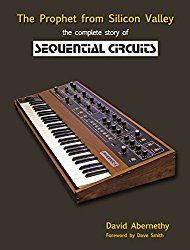
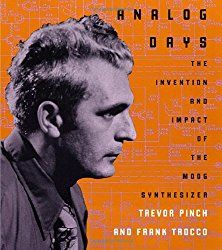
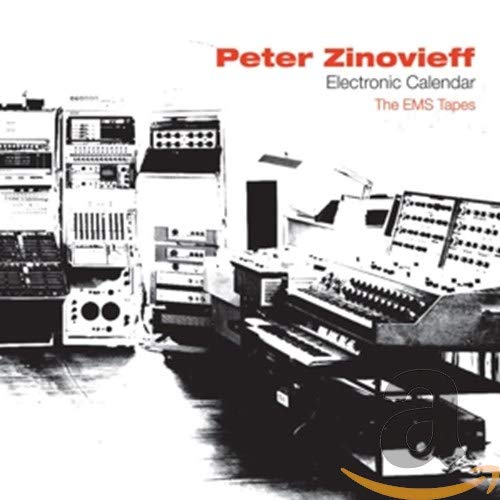
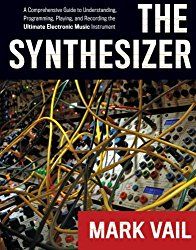
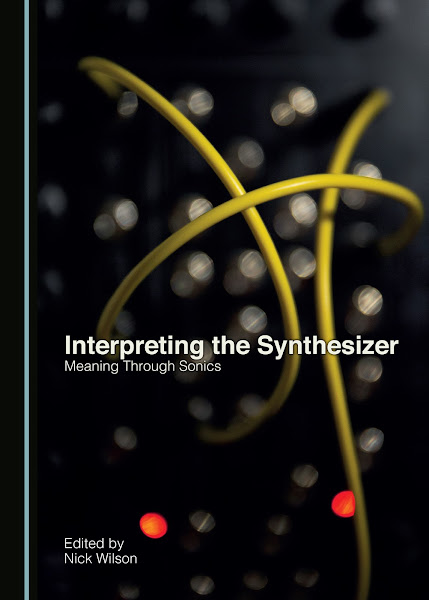
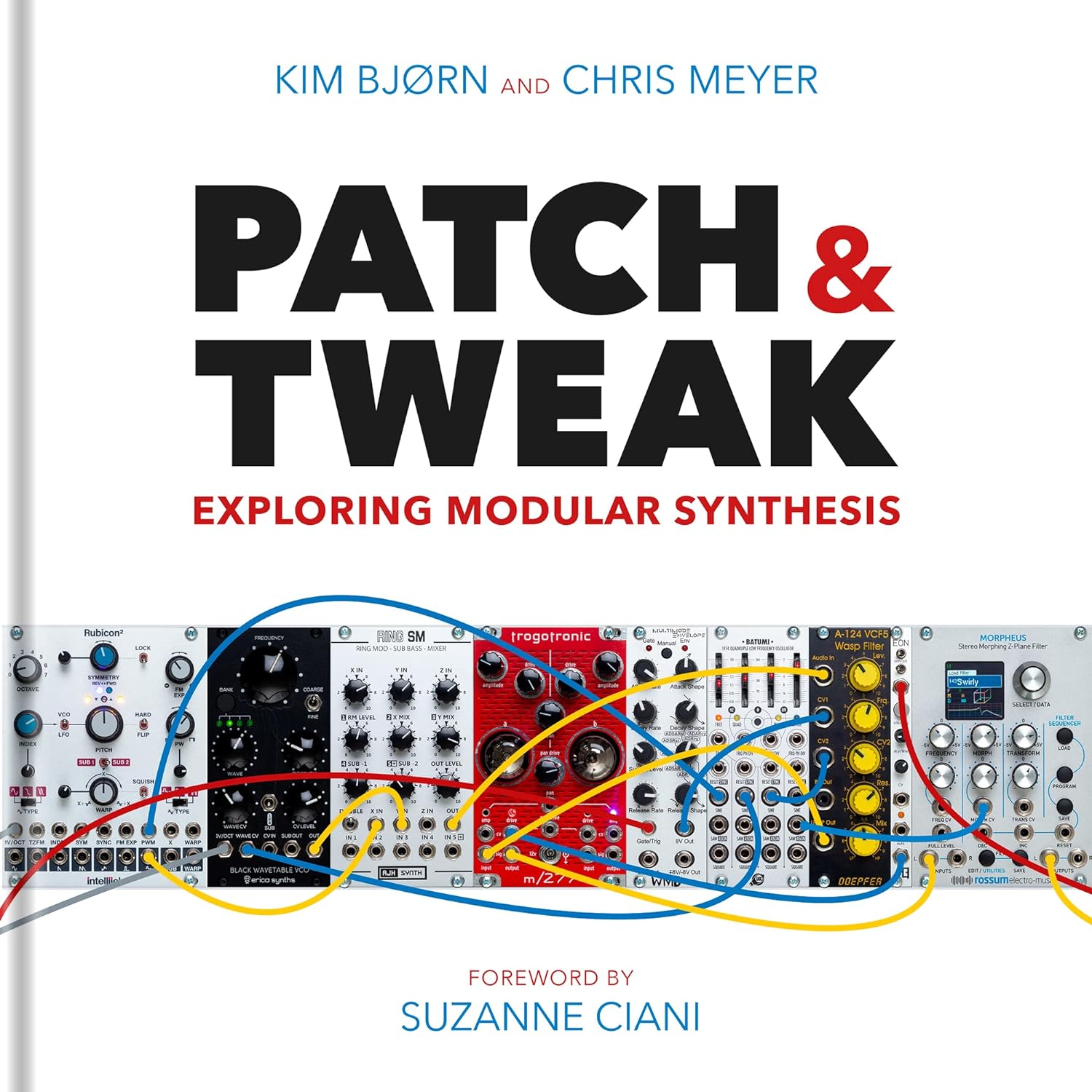
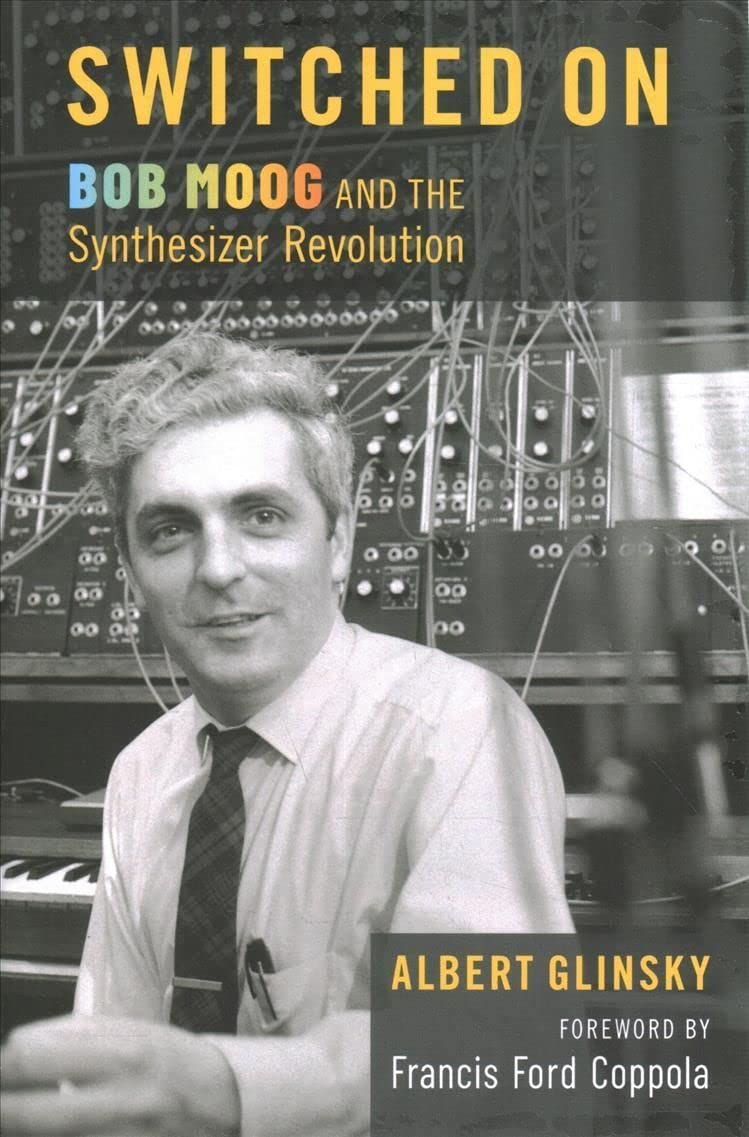
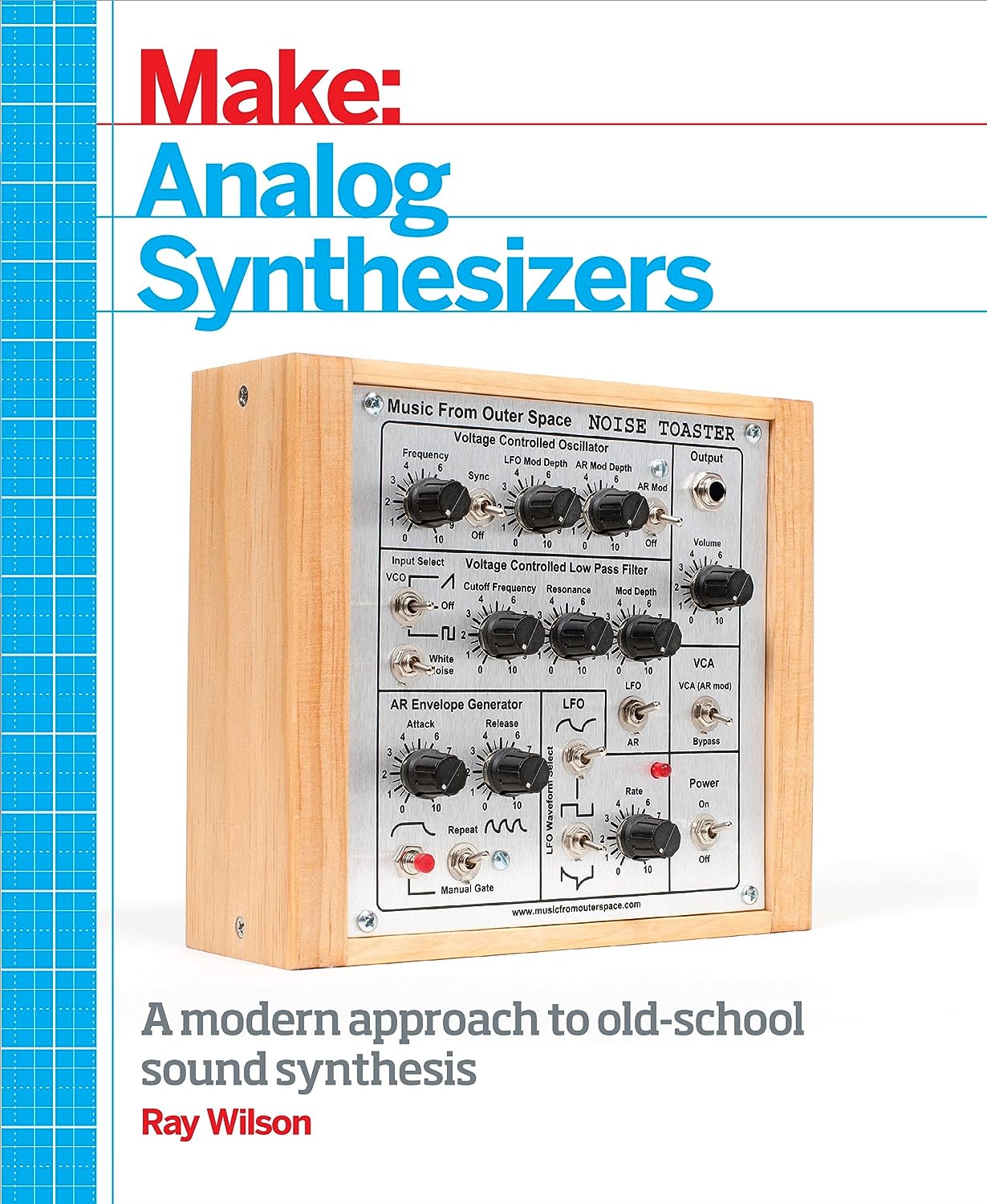
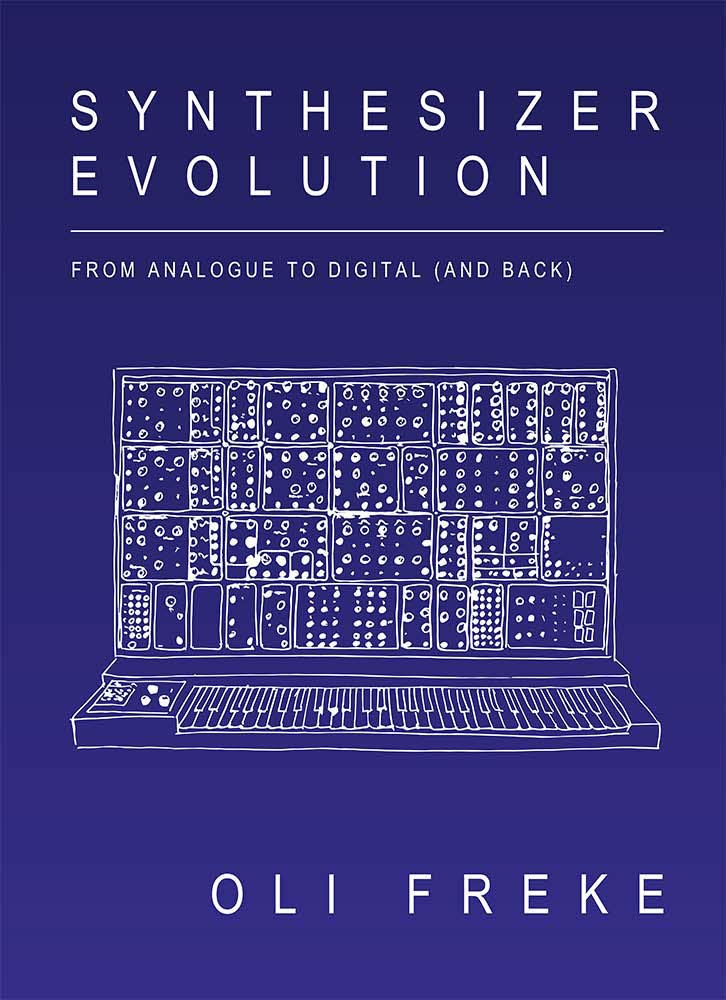
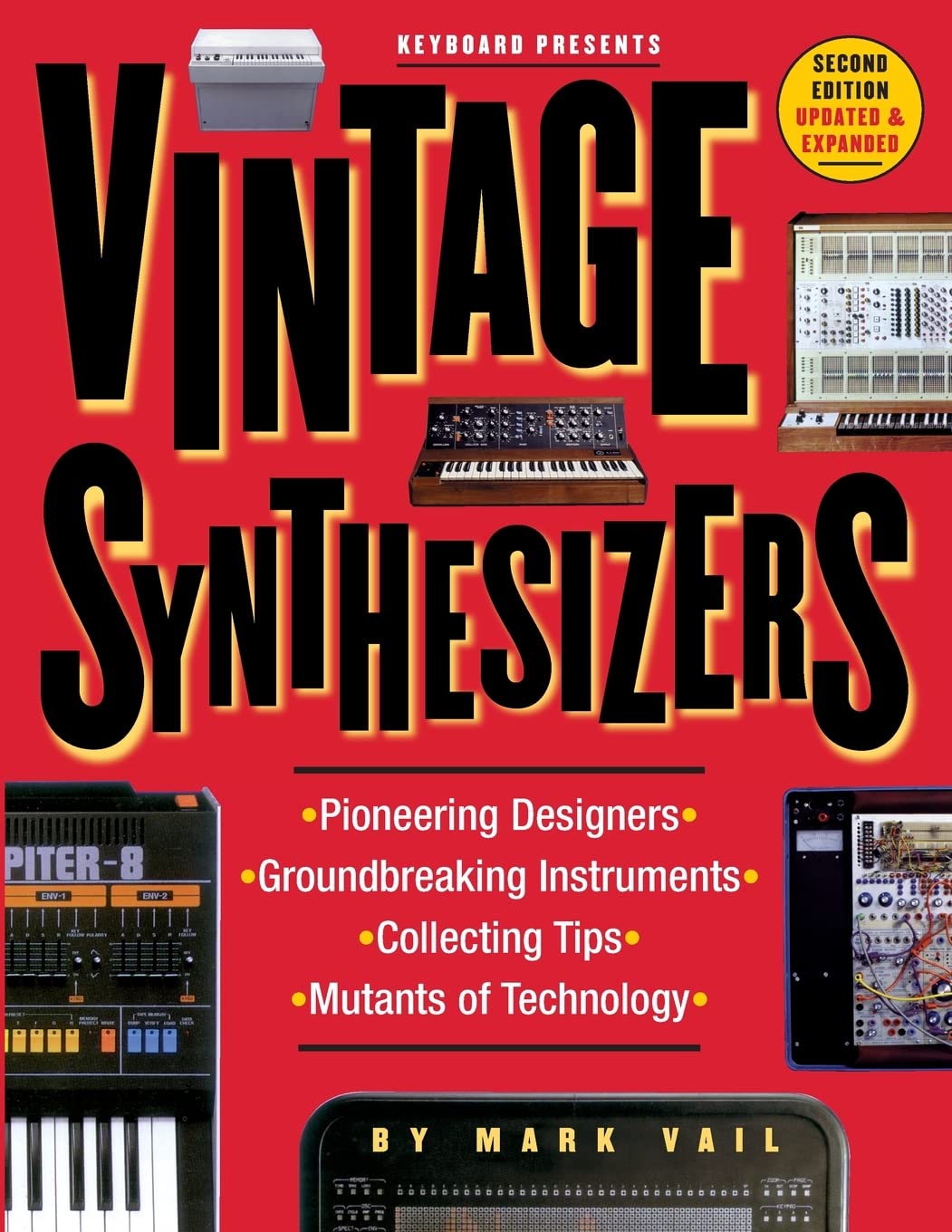
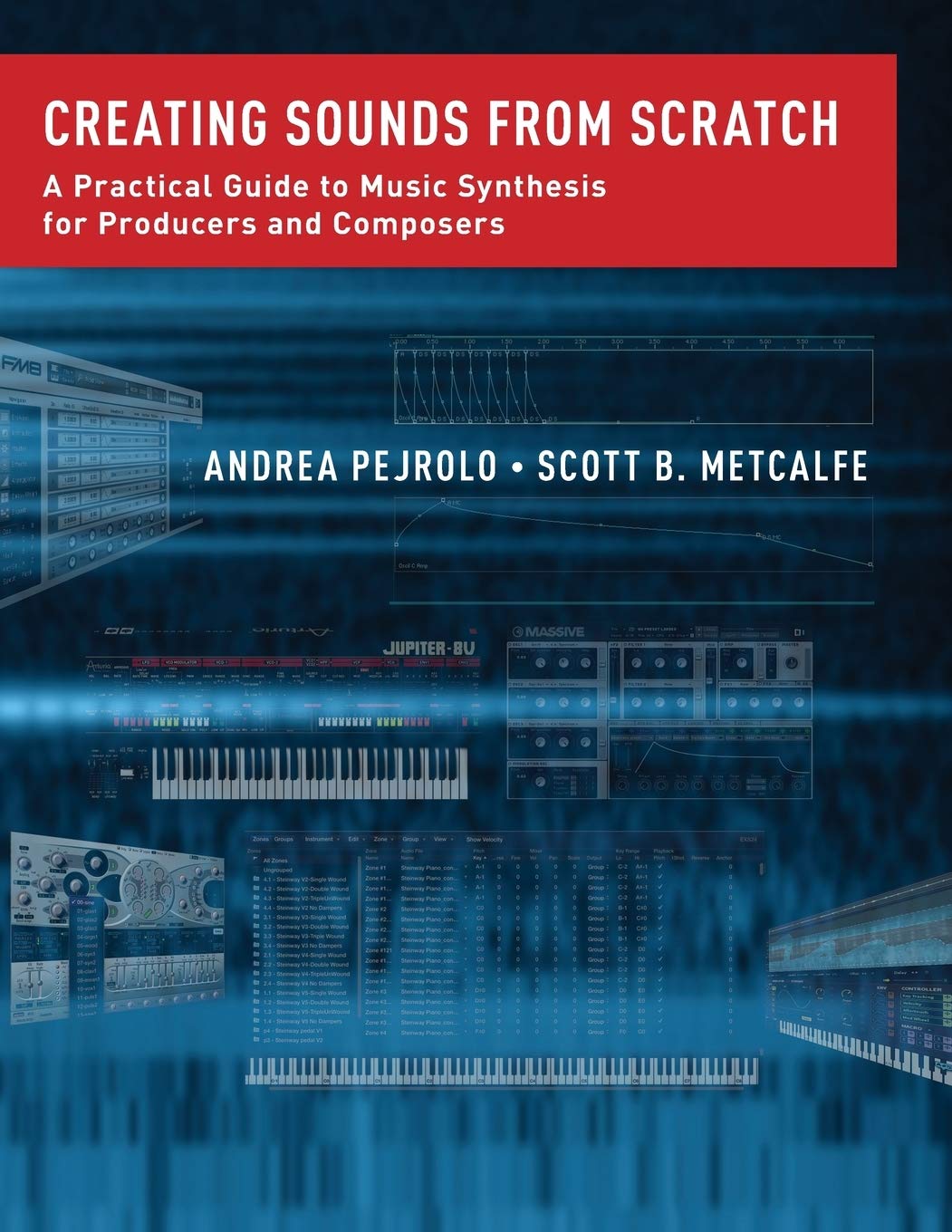
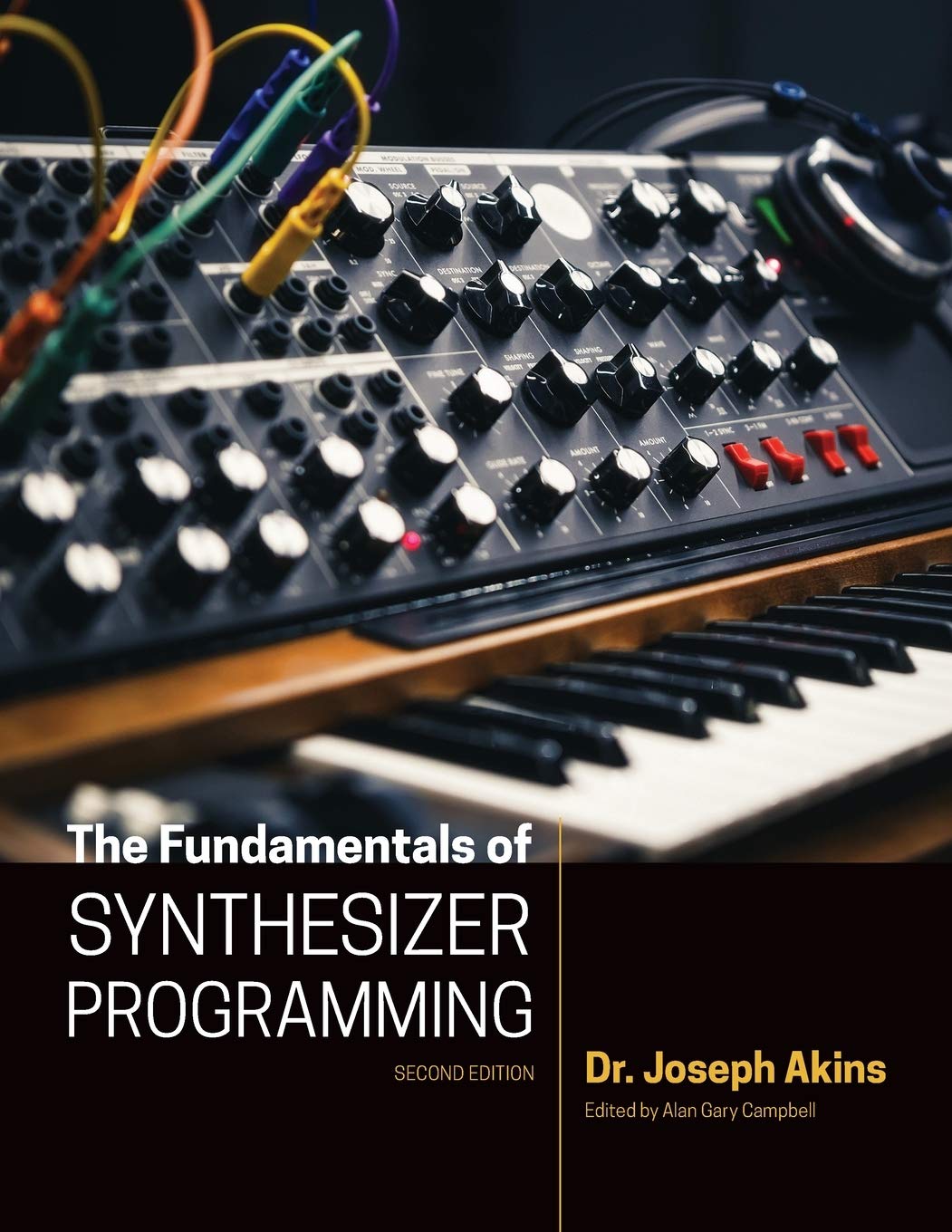
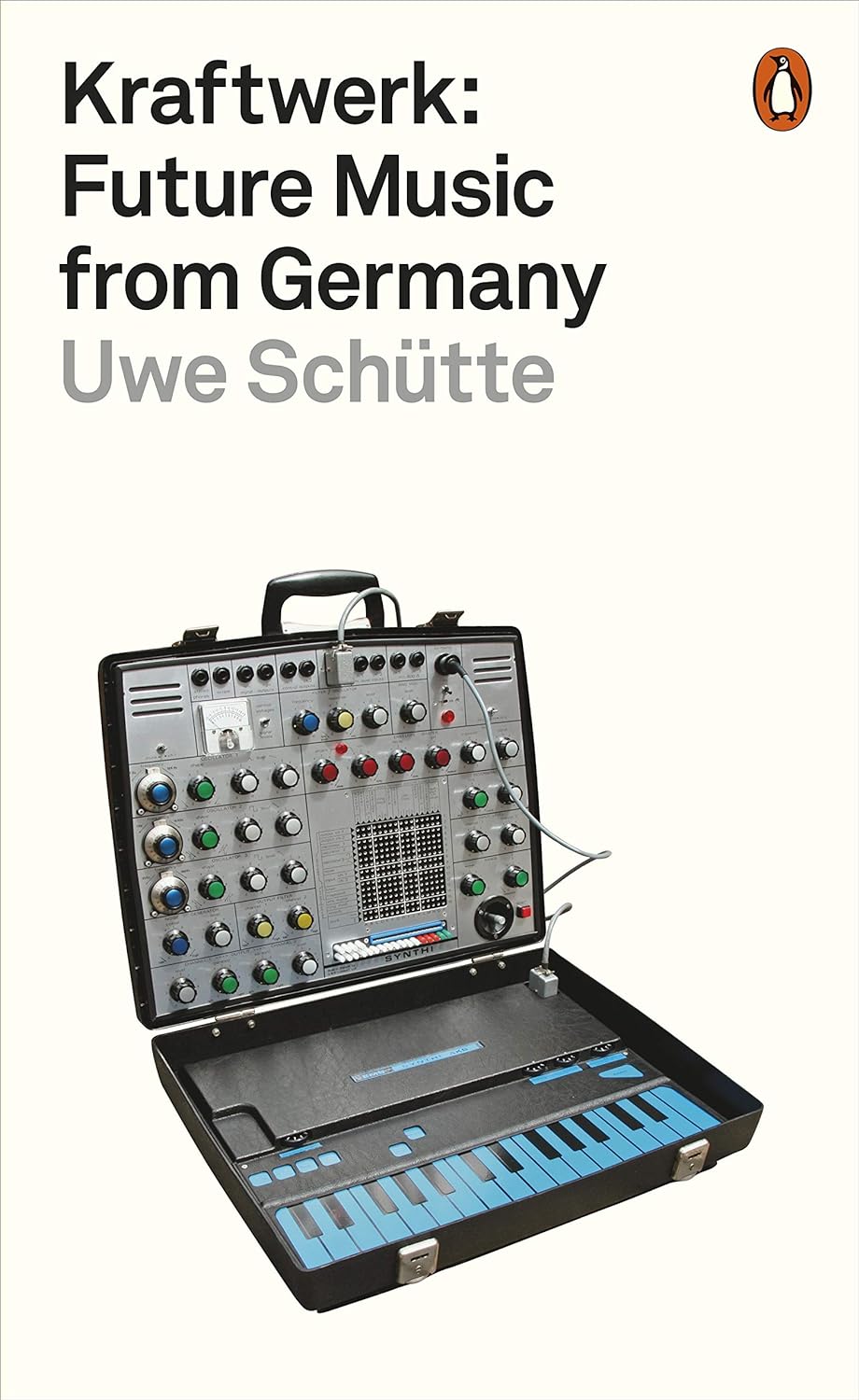
© Matrixsynth - All posts are presented here for informative, historical and educative purposes as applicable within fair use.
MATRIXSYNTH is supported by affiliate links that use cookies to track clickthroughs and sales. See the privacy policy for details.
MATRIXSYNTH - EVERYTHING SYNTH














© Matrixsynth - All posts are presented here for informative, historical and educative purposes as applicable within fair use.
MATRIXSYNTH is supported by affiliate links that use cookies to track clickthroughs and sales. See the privacy policy for details.
MATRIXSYNTH - EVERYTHING SYNTH


























